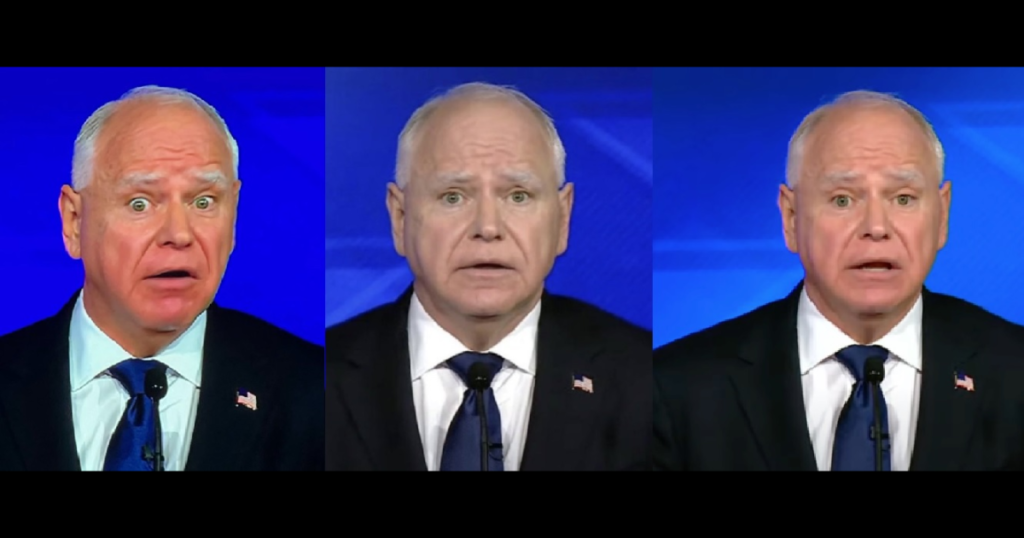Tim Walz’s national debut during the recent vice presidential debate has garnered significant attention, particularly following an unexpected display of panic during a critical moment of questioning. The debate, involving GOP candidate JD Vance and Walz, was filled with impactful statements and assertive exchanges, with Vance notably challenging CBS moderators for their commitment to neutrality. However, it was Walz’s reaction to a question about his previous claims of being in Tiananmen Square that truly captured viewers’ attention and prompted analysis from experts.
Walz’s assertions about his experiences during the Tiananmen Square protests raised eyebrows, especially considering that evidence contradicts his claims; he was actually in Nebraska at the time. A report highlighted the moment when CBS moderators confronted Walz about his statements, triggering a notable change in his body language. Scott Rouse, a body language expert, suggested that Walz’s demeanor shifted to one of panic and discomfort as he faced scrutiny regarding the timeline of his travels. The expert pointed out specific indicators of his anxiety, such as wide eyes and a stressed lower face, suggesting a fight-or-flight response.
This discussion of body language illustrates the significance of nonverbal communication in high-stakes situations like a national debate. Rouse’s analysis pointed out that Walz’s urgent hand gestures were an attempt to convince the audience of his truthfulness, effectively emphasizing his desperation and need for affirmation. This moment stood out as a contrast to the more composed demeanor exhibited by his opponent, JD Vance, who appeared confident and in control throughout the debate. Such differences in composure likely contributed to the overall perception of the candidates in the eyes of voters.
Furthermore, the debate highlighted several controversial statements and claims made by both candidates, with Walz notably claiming to have a personal connection with school shooters, which sparked widespread debate and disbelief. This reference, alongside the debunked assertions about his experiences in China, raised questions about Walz’s credibility and ability to connect with voters on significant issues. While both candidates brought forward their respective policy positions, the manner in which they communicated these points proved critical in shaping public perception.
As the candidates navigated complex topics such as international relations and public safety, Walz’s unsteadiness regarding his past statements may have overshadowed his policy positions, diminishing his stature as a steadfast candidate. Observers during and after the debate underscored the importance of both verbal and nonverbal presentation in political discourse, where authenticity and confidence can greatly impact voter impressions. Walz’s performance and the subsequent analyses serve as a reminder of the heightened scrutiny public figures face, especially during pivotal moments in their political careers.
Ultimately, the fallout from Walz’s significant moment of panic and the various contentious discussions from the debate will likely linger in the minds of voters as they approach the upcoming election. Voters often weigh candidates’ personal authenticity alongside their policy proposals, and moments of vulnerability, such as Walz’s during the debate, may affect their decision-making process. As political contentions continue to unfold and the candidates further define their platforms, the ramifications of this debate will undoubtedly shape the narrative leading into the election.

